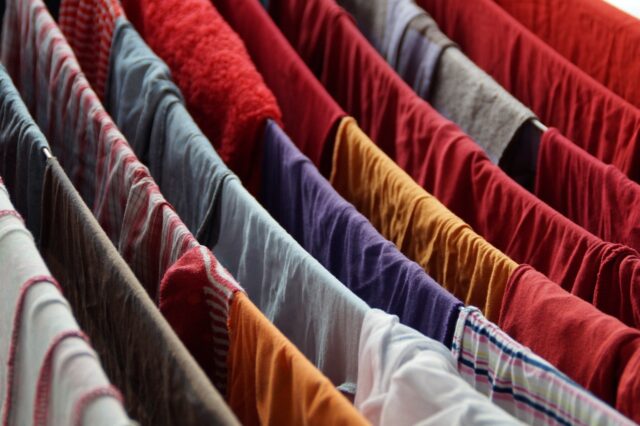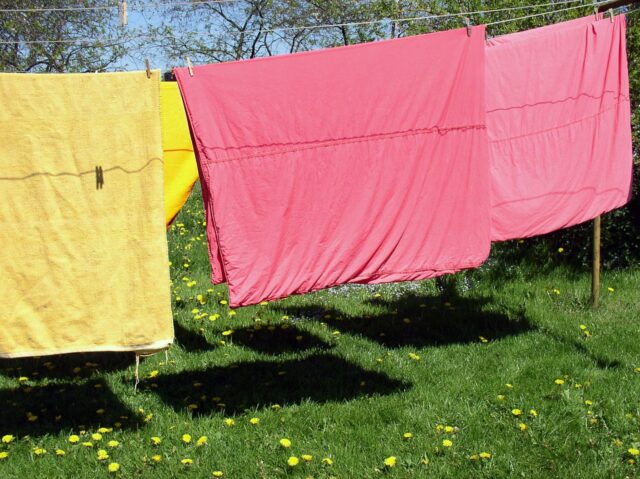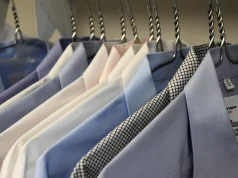
Fabric pilling can be a frustrating problem, especially when it affects your favorite garments or home textiles. Pilling occurs when loose fibers on the surface of the fabric become entangled and form small, fuzzy balls. It’s common on fabrics that experience frequent friction, like sweaters, jackets, or sofa cushions.
While it’s impossible to prevent pilling entirely, there are several strategies to minimize its occurrence and techniques for removing pills without damaging the fabric. In this guide, we’ll explore practical tips for avoiding pilling and safe methods for removing it when it does occur, including when professional services like dry cleaning can help.
Understand What Causes Fabric Pilling
Pilling occurs as a result of wear and friction, which cause short or broken fibers to loosen and bunch together. Fabrics made from shorter fibers, such as wool, cotton, and some synthetics, are more prone to pilling than those made from longer, tightly woven fibers.
Understanding why pilling happens can help you choose the right fabrics and care practices to minimize it. For instance, blended fabrics that mix natural and synthetic fibers tend to pill more because the synthetic fibers are strong enough to hold onto the broken natural fibers, causing pills to form on the surface.
Choosing Fabrics Less Prone to Pilling
One of the easiest ways to avoid pilling is by selecting fabrics that are less prone to it. Generally, fabrics with tightly woven or knitted fibers, such as silk or tightly woven cotton, resist pilling better than those with looser weaves.

Avoiding blends that mix natural and synthetic fibers can also help. When shopping for clothing or upholstery, look for fabrics labeled as “pill-resistant” or “anti-pill.” These have been treated to reduce fiber loosening and will typically last longer without forming pills. Investing in high-quality materials can often mean fewer issues with pilling over time.
Washing Techniques to Prevent Pilling
Proper washing techniques are crucial in preventing pilling. Turn clothes inside out before washing to minimize friction between the fabric surface and other items in the wash. Washing in cold water and using a gentle cycle can reduce agitation, helping to keep fibers intact.
Additionally, avoid overloading the washing machine, as crowded loads create more friction and increase the likelihood of pilling. Choose a mild detergent, as harsh chemicals can weaken fibers, making them more susceptible to breaking and forming pills. For delicate fabrics, consider handwashing or placing items in a mesh laundry bag for added protection.
Drying with Care
Drying fabrics with care is as important as washing them. Air drying is the gentlest option, as tumble drying can create significant friction that encourages pilling. If you must use a dryer, select a low-heat, low-tumble setting, and avoid drying items completely to minimize friction.
Removing clothes while they’re slightly damp and letting them finish drying naturally can help reduce wear on the fibers. Additionally, avoid mixing heavy and light items in the dryer, as the difference in weight can cause items to rub against each other, leading to pilling.
Opting Dry Cleaning for High-Quality Fabrics
For high-quality or delicate fabrics prone to pilling, professional dry cleaning can be a valuable option. According to a representative from 5asec, a leading Laundry Company in Abu Dhabi, “Dry cleaning uses a solvent-based process rather than water, which is much gentler on fibers. This process helps prevent friction that would typically cause pilling in a regular wash cycle.
Furthermore, professional dry cleaners use specialized equipment to handle delicate materials, reducing the risk of pilling and other fabric damage. Dry cleaning is especially beneficial for garments made of wool, cashmere, and other fine materials that require extra care.”
Avoiding Friction in Daily Wear
In addition to washing and drying carefully, reducing friction in daily wear can prevent pilling. Avoid carrying bags or purses with rough straps over soft fabric surfaces, as this can rub against the fabric and create pills. When layering, choose smooth fabrics over textured or coarse fabrics to minimize contact and friction.
For furniture or upholstered items, consider using throw blankets or removable covers in high-use areas to reduce friction from frequent contact. Taking these small precautions can go a long way in keeping your fabrics pill-free.
Safe Methods for Removing Fabric Pills
If pilling has already formed, there are safe methods for removing it without damaging the fabric. Fabric shavers or electric de-pillars are effective for gently trimming pills from the surface of the fabric. These tools have rotating blades that cut away pills without pulling on the fibers, leaving the fabric smooth.
Alternatively, a small pair of scissors can be used for delicate items—though this requires a careful hand to avoid snipping the fabric itself. For minor pilling, a fine-tooth comb or pumice stone can be gently brushed over the fabric surface, effectively lifting and removing pills.
When to Seek Professional Help for Pilling
In some cases, particularly with expensive or delicate garments, professional dry cleaning can be the best option for removing pills. Professional cleaners have specialized tools and experience in handling pilled fabrics safely, allowing them to restore the garment’s smooth surface without risking further damage.
This option is especially helpful for items made of wool, cashmere, or silk, where the fibers are delicate and easily damaged by home removal methods.
Preventing Pilling in Home Textiles and Upholstery
Pilling isn’t just limited to clothing; home textiles and upholstery can also develop pills over time. To prevent pilling on sofas, chairs, or bedding, consider investing in high-quality fabrics that are less prone to pilling. Using removable covers or slipcovers can protect your furniture from friction, especially in high-use areas.

Regularly fluffing and rotating cushions can also reduce wear on specific spots, helping to prevent pilling from becoming a persistent issue. For bedding, washing sheets and pillowcases separately from items like towels can help reduce pilling by minimizing contact with coarser fabrics.
Understanding When It’s Time to Replace Pilled Fabrics
While pills can be removed and preventive measures can extend the life of your fabric, all materials have a lifespan. Over time, if the pilling continues despite careful maintenance, it may be a sign that the fabric is worn and should be replaced. Heavily pilled fabrics may start to look dull and worn out, detracting from their appearance.
Replacing them allows you to enjoy fresh, high-quality fabrics without the frustration of recurring pilling. For cherished garments or home textiles, consider repurposing them if they’ve reached the end of their life for their original use.
Conclusion
Pilling can be a persistent issue, but with the right care techniques, it’s possible to keep your fabrics looking smooth and well-maintained. Choosing the right materials, washing and drying carefully, and minimizing friction in daily use are all effective strategies for avoiding pilling.
If pilling does occur, using a fabric shaver or professional dry cleaning can safely restore the fabric’s appearance without causing further damage. With a bit of extra attention and the occasional professional service, you can enjoy the comfort and style of your favorite fabrics for many years, free of unsightly pills.







